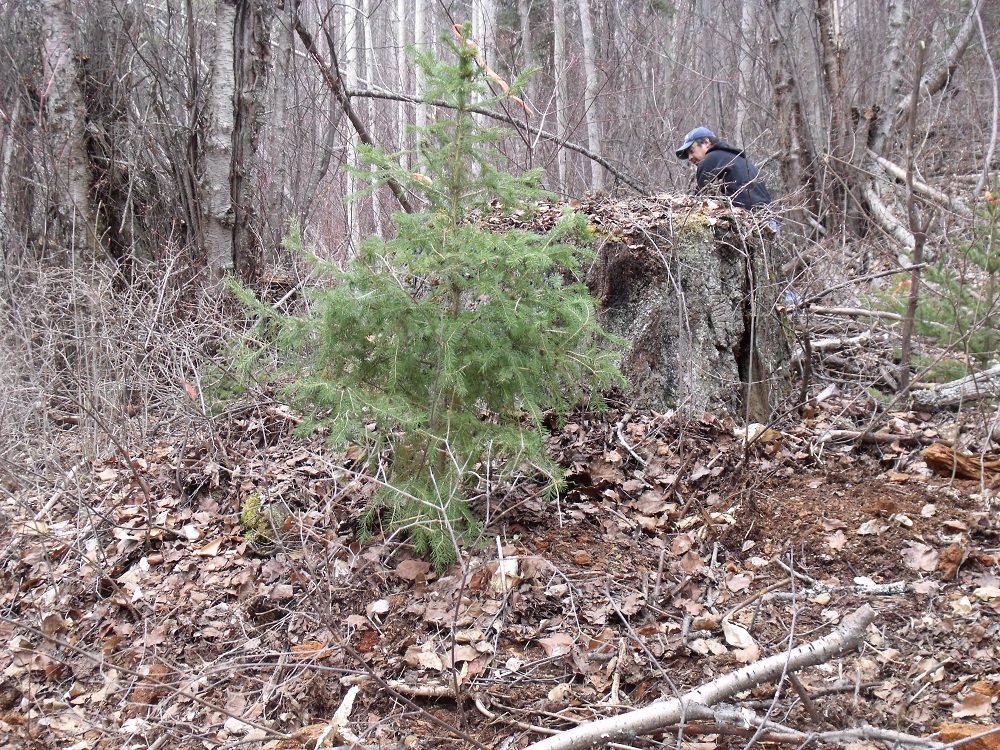Gibbs Creek Riparian Restoration
The Gibbs Creek eco-cultural restoration area is a unique place in Xaxli’p Territory. The water-rich forest along the creek is home to cedar, birch, alder, and other water-loving plants. Several medicine and food plants that are rare in Xaxli’p territory are found growing here, including red dogwood, sarsaparilla, and hakwa7 (cow parsnip). Although the area was logged in the mid-1900s, there are still a few large cedar, spruce and fir trees growing along the stream banks.
The logging created a significant change in the riparian (streamside) ecosystems of Gibbs Creek. When the large spruce and fir trees were logged, a dense stand of aspen, birch, and alder grew in. The deciduous trees blocked sunlight from the forest floor, and suppressed growth of new spruce and fir trees. As a result, the forest changed from an old growth conifer forest to a young deciduous forest, with almost no spruce and fir trees replacing those that were logged. A few cedar seedlings are growing in the understory.
Our objective at Gibbs Creek was to assist the forest in returning to an old-growth spruce, fir, and cedar forest, similar to what it looked like before it was logged. To do this, we planted a total of 70 trees along the stream next to old growth stumps. Then, we cut down a few deciduous trees next to each transplants to the sunlight to the transplants.
Eco-cultural Restoration Prescription
Our objective at Gibbs Creek is to assist the forest in returning to an old-growth spruce, fir, and cedar forest, similar to what it looked like before it was logged. High-grade logging in the mid-1900s removed the big spruce, cedar and fir trees. As a result, a thick young stand of birch, aspen, and alder grew in, blocking sunlight from the forest floor and making it difficult for spruce, cedar and fir to regenerate.
In order to restore a healthy conifer forest, we transplanted three or four young conifer trees around each old-growth stump to achieve a stand structure and composition similar to that of the old-growth forest. Then, we removed some of the deciduous trees around the transplants to increase sunlight to the forest floor. The restoration prescription included the following treatment specifications:
Areas to transplant young trees must be accessible by vehicle and wheelbarrow, contain stumps and fallen trees, and have natural openings in the deciduous overstory.
Trees to transplant are selected based on the following criteria:
growing in the 800-1000 meter elevation range
more than 4 years old
between 30 cm and 150 cm in height
Douglas fir or spruce trees
free from insects and disease
Trees must be dug up carefully, to maintain the majority of the taproot and other roots. The soil around the tree must be transplanted as well.
Deciduous trees and shrubs need to be removed around the site of the transplanted tree to ensure adequate sunlight to the tree.
Three or four trees are to be planted next to each stump.
Trees are to be planted in mineral soil, decaying wood, or a mixture of both.



